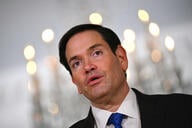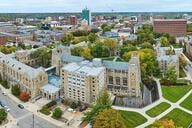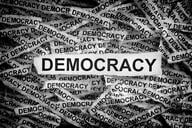You have /5 articles left.
Sign up for a free account or log in.

PepeLaguarda/E+/Getty Images
“I’ve decided we are going to have the ‘Decade of the Arts’ over the next five years.”
I heard this statement uttered by a college president in a meeting during the late 1990s. Remarkably, no one in the room laughed out loud, but sideways glances and restrained smiles were evident among the participants.
No such initiative ever emerged. The vision was compelling, but the time frame was a death knell—a grand ambition for the arts constrained to a narrowly defined, limited and time-bound project. An imaginative future betrayed by an unrealistic time horizon.
Time is the greatest asset available to colleges and universities, but it is also the most misplayed. In the moment, time feels like an immediate constraint, lorded over by the tyranny of the urgent. In this context, time feels stingy. The arc of time is different. There, time is a gradually unfolding process through which the most important things are achieved. It is generous when used wisely.
Looking back through time can lead to distorted thinking. As leaders, we can fall prey to a misperception of the time it takes to do great things in the present day. Most everything seen before us today took longer to develop than one might think.
Several years ago, my institution announced the awarding of a multimillion-dollar grant from a family foundation for a capital project. A few days later I was in a casual conversation with a member of the college community who congratulated me on the gift and then asked, “Were you surprised?”
I was taken aback by the question but realized not everyone is acquainted with the work involved in obtaining such a grant. I explained the effort required about 18 months and involved many steps. The relationship lasted even longer. What I did not share was that current members of the family had been engaged with the college over the previous 25 years, and the college received its first gift from a member of the family nearly a century ago. Many of the most profound achievements colleges and universities have produced have only been possible through a long arc of time involving multiple generations.
For an enterprise that dates back centuries in this country, time should be viewed as a critical asset. Instead, societal accelerants, including urgencies around demographic decline, economic uncertainty, technological innovation, evolving workforce expectations, social change and unpredictable public policy, have pressed colleges and universities to process change too quickly, or at least attempt to do so. Yet, the arc of time in the postsecondary universe is largely unresponsive to the demands presented to it. Observers view this as recalcitrance. Blame abounds and is pointed in many directions.
Many people share considerable anxiety about the future of American higher education, but policymakers and institutional leaders are at a disadvantage in deliberating these important matters. Few know much about or have an interpretive understanding of the history of American higher education and the attending organizational developments that have informed emerging conditions.
The framework we live in today began with the release of the Truman Commission Report, issued in 1947 with the title Higher Education for American Democracy. Though this was a government report issued by the President’s Commission on Higher Education, appointed by President Harry S. Truman, the benefit was not in its political power but in its timely expression of a set of imperatives that resulted in student aid programs, institutional funding streams, infrastructure development and equal-opportunity programs. The report became a stimulant for action by outlining the needs of the postwar nation with great clarity, then setting forth a proposed agenda for a national higher education enterprise. This process ushered in a period of extended assimilation lasting at least 30 years.
Today’s critics of higher education issue the indictment that these patterns of organization, now well-formed since the 1940s, and once viewed as innovations, are holding the enterprise back. They advocate for interventions that will change higher education as we know it. For some the issue is economic, with advocates offering competing designs for forgiving student loans, ending interest subsidies or eliminating loans altogether. Others seek to create cost efficiencies by dehumanizing education through instructional technologies that divorce the learner from the teacher. Those working in colleges and universities have seen this recurring process many times before. The pathway of assimilation is inherently gradual, and the formation of conformities reliably predictable, to the impatient frustration of many.
Unfortunately, policymakers have insufficient understanding of how change is sponsored and processed in the national enterprise for higher education, resulting in faulty assumptions about the purported recalcitrance of postsecondary institutions and systems. The same is true within institutions. The knee-jerk reaction is to overgeneralize the situation and seek simplistic explanations for the perceived slow pace of change—such as blaming the faculty for holding institutions back. Given the number of false starts, aborted attempts and misguided ideas for large-scale change littering the higher education landscape (e.g., massive open online courses, excessive tuition discounting, costly amenities) it’s prudent to stop and take a closer look. A well-informed but intellectually modest posture serves us well in contemplating where this vast enterprise can and should move in the decades ahead, as it carries with it all the accumulated work of the past.
The challenge is that higher education is an enterprise well-known for its ambiguity. Those of us who are stakeholders do not all share the same sense of purpose or use the same measures for success. The lack of shared understanding regarding the history that informs the present and drives the future weakens our capacity for an effective response. Some cling to patterns of the past. Many carry perspectives informed by personal experiences in higher education that are long out of date or highly contextual to a specific time and place. Suffering under the weight of shifting expectations, the pressure is to react rather than respond. The worry that a program, service or activity—even an entire institution—may be lost is an enormous weight to bear and is fraught with conflict.
Add to this the sheer breadth of the national higher education enterprise. According to the most recent data available from the Digest of Education Statistics, there are about 19 million students enrolled in degree-granting institutions in the postsecondary universe. The number of degree-granting institutions is just under 4,000. About 1.5 million faculty members teach students, and when staff members are included, the total employee head count exceeds 3.9 million. They are together engaged in 58 states and jurisdictions, each with its own set of legal, regulatory and policy frameworks.
They are also guided by one of 19 recognized institutional accreditors and approximately 70 programmatic accreditors, according to the Council for Higher Education Accreditation. Each of the nearly 4,000 institutions defines the relevant programs of study, degree levels and curricular and cocurricular activities uniquely, yet within broad patterns of conformity, consistency and accountability. These institutions are classified, ranked and evaluated by many external entities, each with its own perspective on higher education. There are many conventions and compliance measures informing best practices and expected patterns of behavior.
Time is the most critical asset in the higher education resource portfolio. Major initiatives, whether undertaken on a campus, or at a local, state or national level, require considerable planning, typically in multiple recursive phases of implementation, to advance effectively. Renewing our determination to invest the time needed to do really big things well will be the key ingredient in our collective development as institutions, and in that of higher education as a national enterprise.




